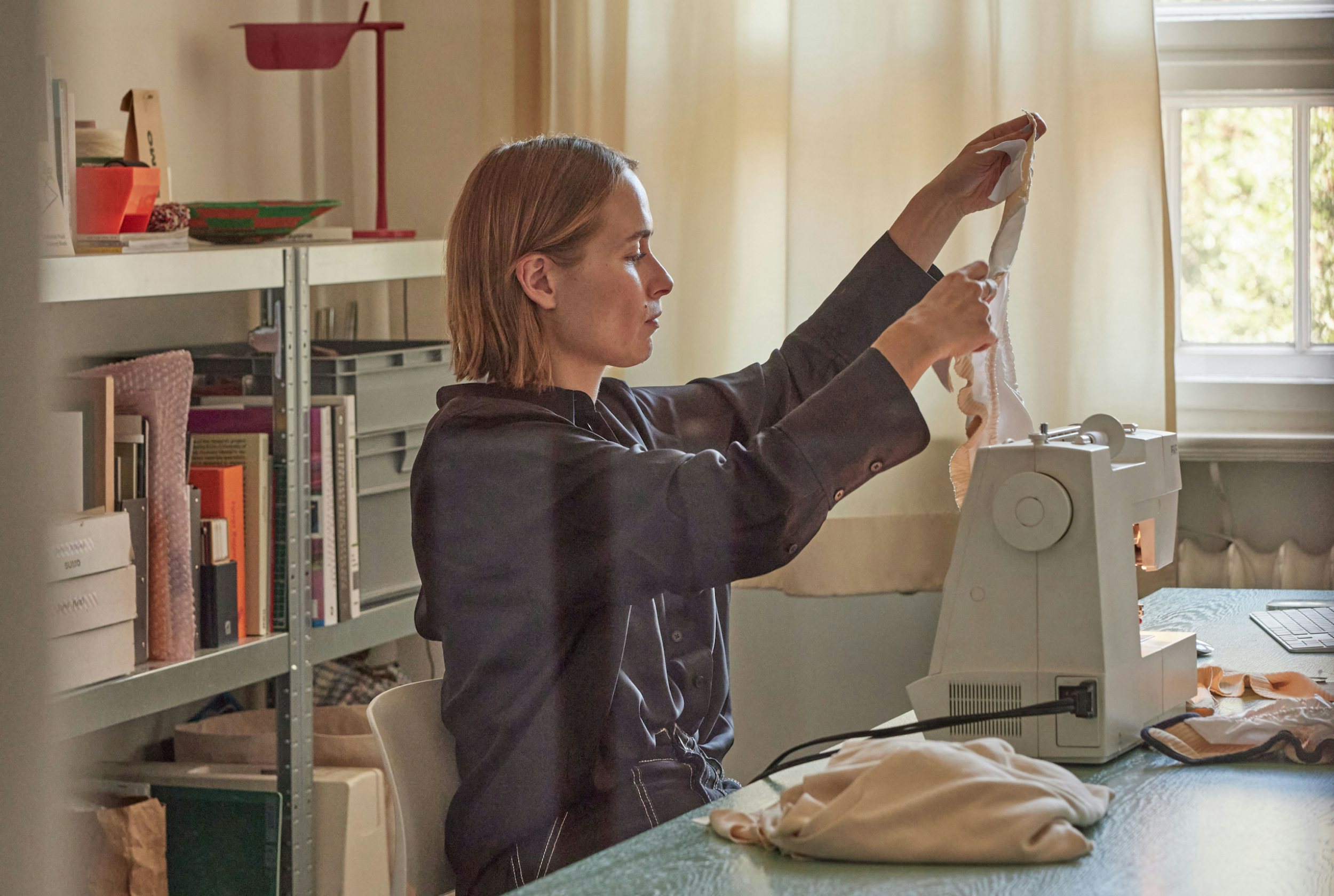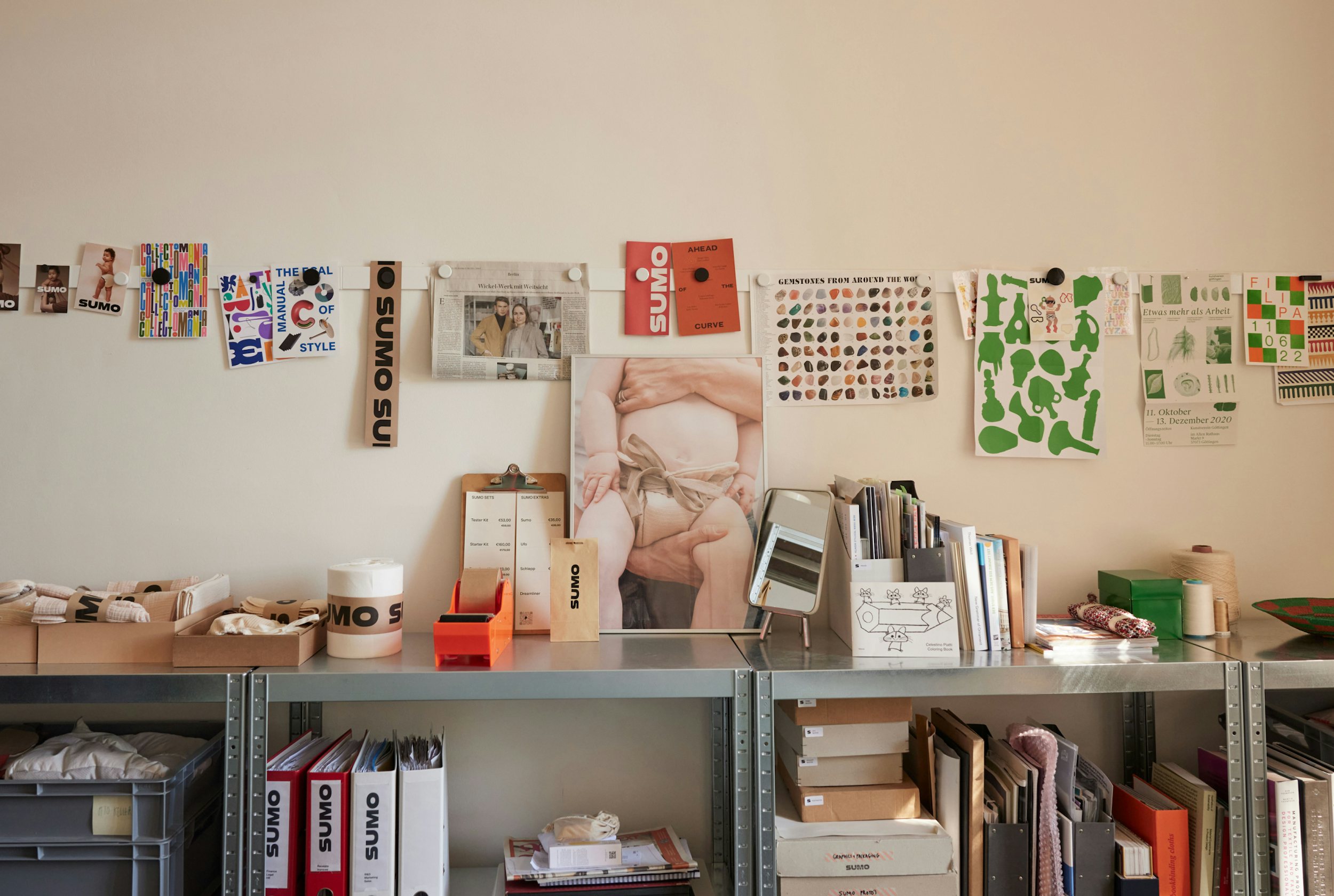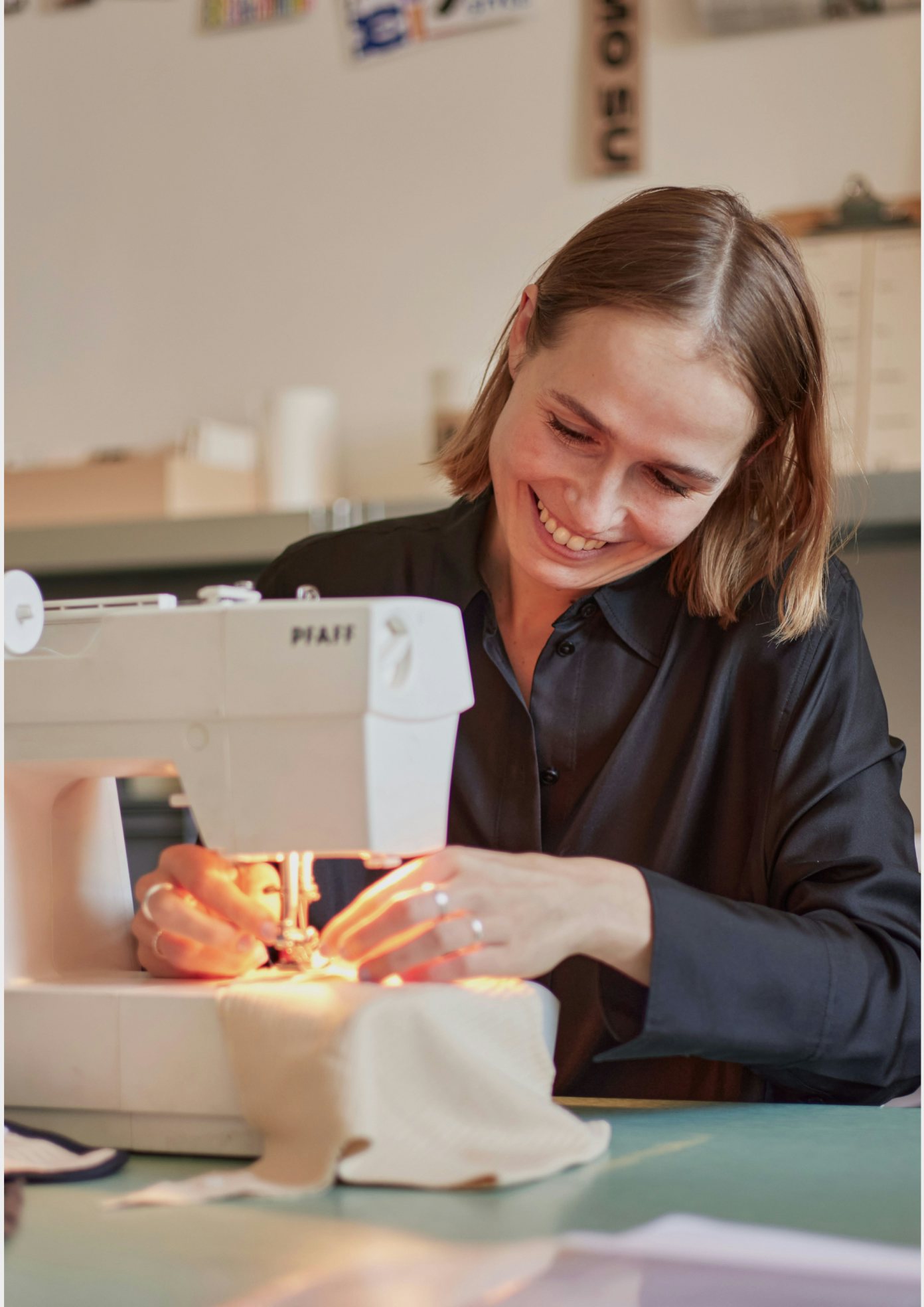
Sumo
Baby
Luisa Kahlfeldt
Luisa Kahlfeldt markets a high-performance diaper that reduces a baby's diaper use from about 5,000 to 25 diapers. The reusable Sumo diaper, including an easy solution for laundry, is attractively designed and much better for the care of the baby's bottom.
In the EU alone, 10 million disposable diapers are thrown away every day and they take around 500 years to break down. The synthetic materials used are also not ideal for baby skin. Many parents are aware of the waste they create, but the alternatives are usually impractical or time-consuming. We spoke to Luisa about her love for good design, sustainability dilemmas and how even small changes in how we consume can make a big difference.

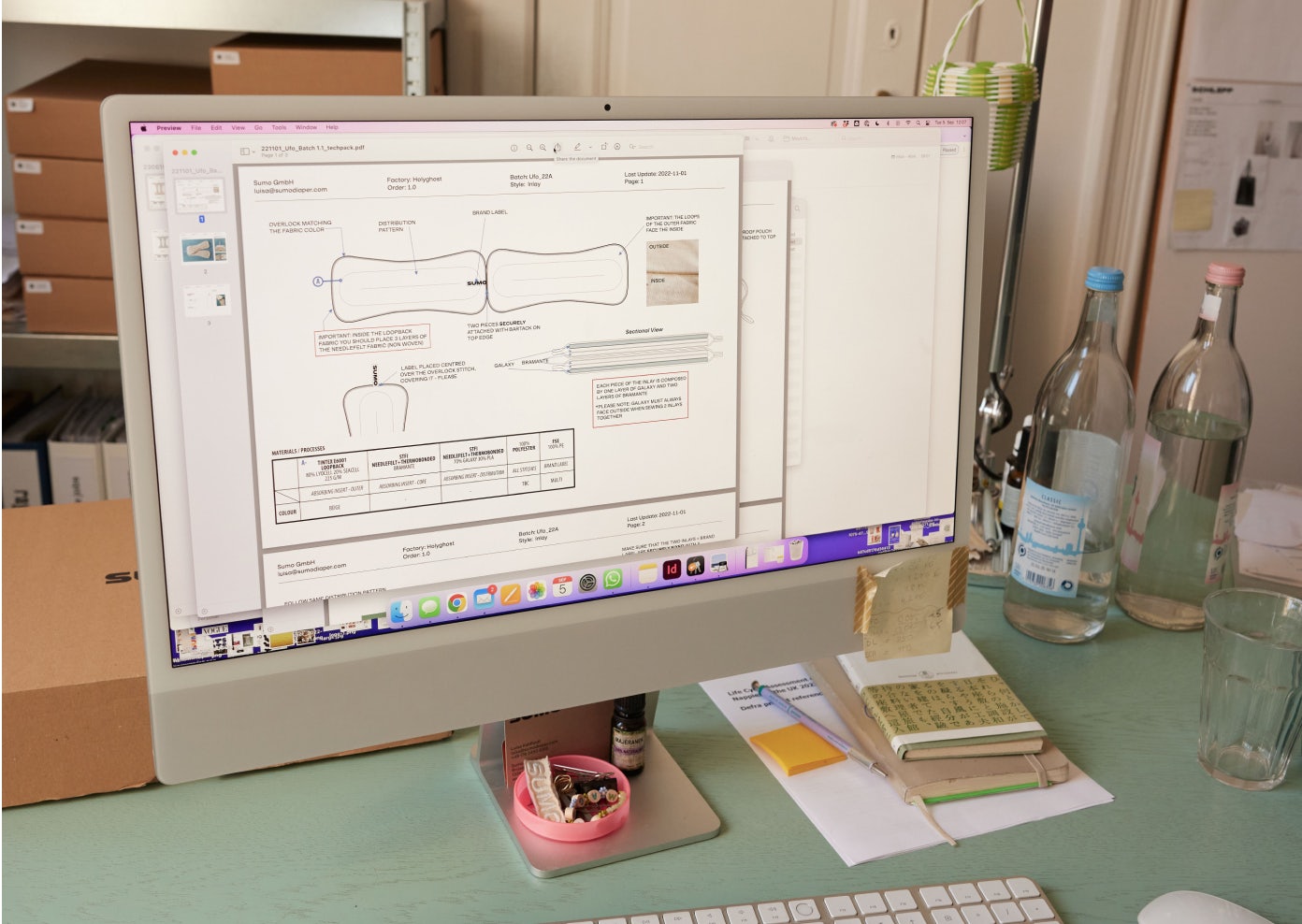
Photography: Anouk Moerman
Film: Blickfänger
Hi Luisa, what drives you, as a designer?
My parents are both architects, and I grew up with them explaining the construction of the built world around us. They taught me to always wonder: why do things look the way they do, could they look differently? I wanted to understand how the world works and decided to study design. I believed, and still do, that a well-designed product can make a difference. But in reality, my work consisted of designing aesthetically pleasing tables. There was a point where I thought: is this it? I felt the urge to break out of this comfort zone and use design to make a difference.
Can you tell us what difference you wanted to make, and how?
Well, firstly it is good to know that each child uses around 5000-6000 diapers, until they’re potty trained. That’s around 1 ton of waste per baby. Insane numbers, but I only learned this later. The starting point of Sumo Baby was this textile called Seacell that I developed during my masters at ECAL in Switzerland, which was incredibly soft. It has the same feel as silk, but you can wash it at higher degrees, it’s much more durable and it’s highly absorbent. I knew this was something you could wear to naked skin. A friend who just got a baby pointed me to diapers. I was not a mother myself and felt unsure if designing a product I didn’t directly relate to, was a good idea. But I did see a need, as cloth diapers were still these ugly, plastic and overly colorful things. I felt that the world needed a beautiful, sustainable alternative to what is out there.
So, you re-design diapers. Tell us, what is the problem in the diaper industry, can you paint us a picture?
Well, the first one-piece plastic diaper was invented in 1961 and it got really big from the 1970s onwards. They are very convenient, but don’t biodegrade. Today, the product category is dominated by two companies: Proctor & Gamble have Pampers and Kimberley Clark, Huggies. Pampers is the biggest, they hold a 70% market share. Pampers has completely taken over the market, their lobby is huge and they have big deals with hospitals around the world. Did you know that when a baby is born in the hospital, and the nurse takes it for a check, that in 95% of the cases the newborn comes back wearing their diaper? When the parents go home with their baby, the purchasing decision has been made for them.
And yes, disposable diapers are cheap and make your life easy. Because of that, they’ve played an important role in the emancipation of women and women having careers. Disposable diapers save a lot of time, especially doing laundry, and they allow women to spend that time on something else. However, from a sustainability point of view, they also have a big negative impact as disposable items that are disposed each day and that cannot decompose.
More and more parents realise how much waste is generated with disposable diapers. But most of the current offer of cloth diapers are not attractively designed and have practical limitations.
What is your solution for this, what is the product you are designing?
More and more parents realise how much waste is generated with disposable diapers. But most of the current offer of cloth diapers are not attractively designed and have practical limitations. They are a one-part design, meaning you either need to wash them constantly or you have to buy a lot of them so you can change regularly. We decided to design an attractive product to speak to a broader audience and focus on practical use, including an easy laundry solution.
Cloth diapers become hassle free once you have the right set-up. So we had to think of the whole product family around the diaper. Our product consists of an outer diaper, the cover, is available in three sizes. Newborns, babies and toddlers. Then we have washable inlays, which will suffice until your baby starts eating solid food. Once your baby starts eating solid food, you add a disposable sheet, our Dreamliner, that catches the baby poo and that you can dispose of easily.
It works like this: at the beginning when your baby is not eating solid food yet, the baby poo is water soluble. This means that when you change the diaper you can put the inlay along with the baby poo in the washing machine. For this we designed a wetbag, a waterproof pocket that allows us to store the used inlays for up to three days. It's a breathable construction, so lots of fresh air gets in. We deliberately did not add a zipper, as smell develops when something is air tightly closed. This bag functions both as a carry-on bag for inlays and liner, and as a washbag that can keep dirty laundry on the go. It can be thrown in the washing machine completely, because we designed it such a way that it empties itself. The bag is a very important part of the system, it makes using a cloth diaper hassle free.
Then, once your baby is eating solid food, the poo does not belong in the washing machine anymore. You use our diaper liner on top of your inlay, which looks like a kitchen towel. This catches the poo, and you throw that away. You just put the inlay and if needed the diaper into the wash bag and wait for your next laundry day.
Sumo offers a range of products that will get your baby through the first years until it’s potty trained. Depending on your needs you choose the full kit for making the sustainable choice every day, or a part-time kit for using the reusable option occasionally.
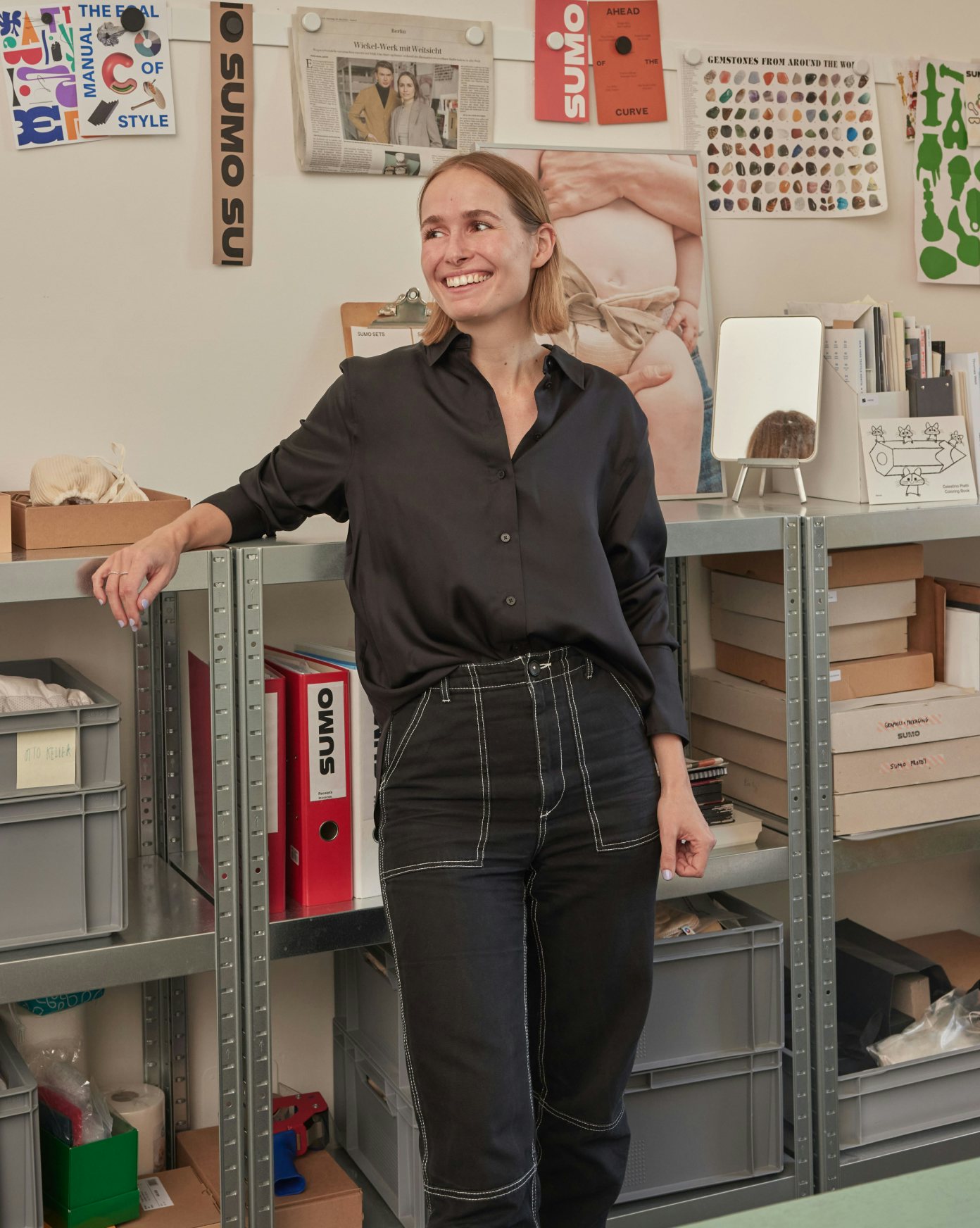
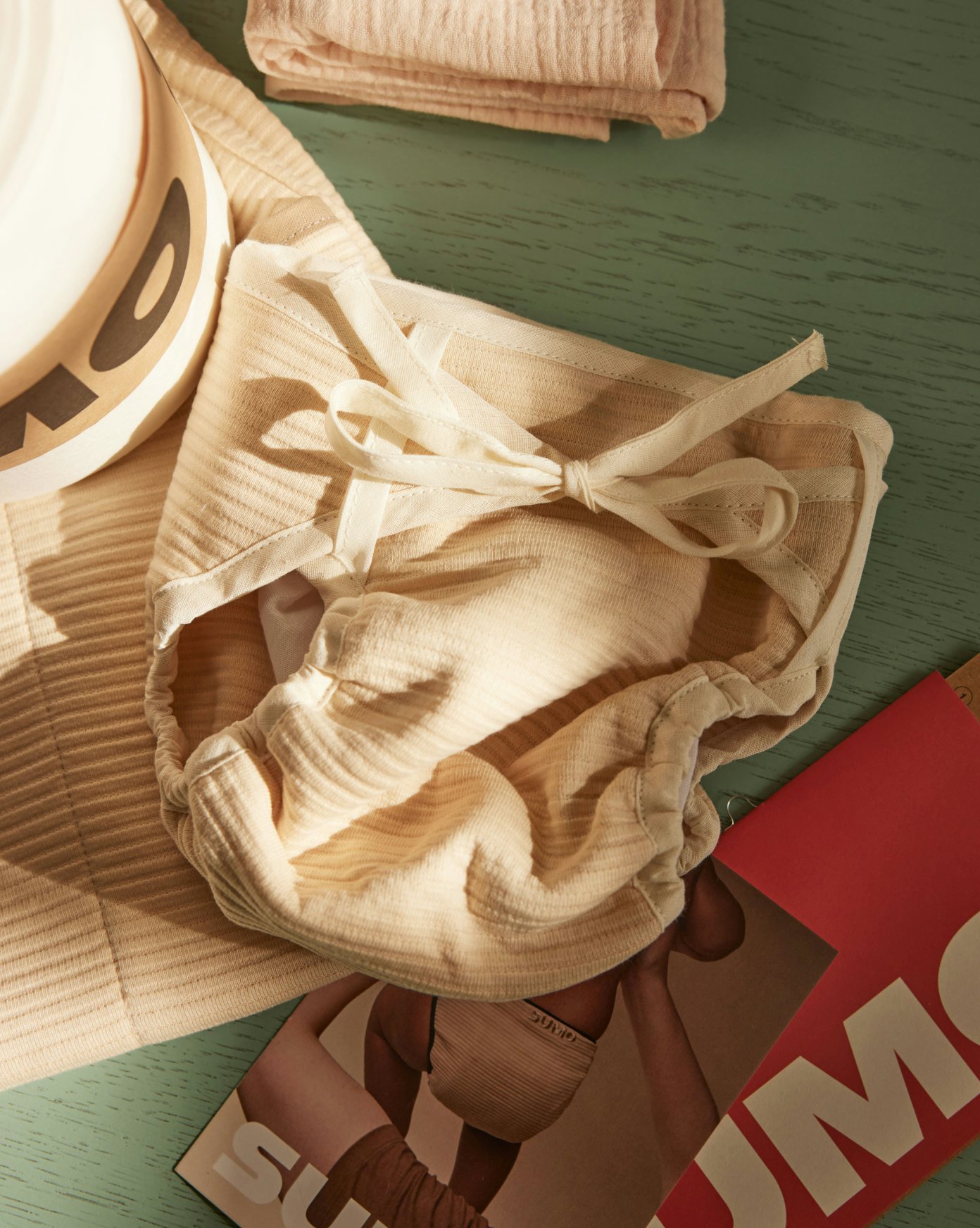
Is this differentiation of parts and sizes the superpower of your product compared to the current offer? What is its most important quality?
I think what is different with Sumo is the high-performing material we use, with design at the core. A cloth diaper is effectively a high-performance product. Just like an outdoor jacket, it needs to be waterproof, breathable and extremely durable. And you need to be able to wash at 60 degrees, three times a week. There are so many technical things this product needs to achieve. I thought it was quite interesting that brands were just using cotton and polyester for diapers, while we are surrounded by high performance technical fabrics. No one has ever used them in the context of cloth diapering.
So which high-perfomance materials do you use for Sumo?
I designed my very first prototype of a Sumo diaper using the Seacell material. It was made in Germany, and I collaborated with a Swiss company to make the fabric waterproof and breathable. It was the perfect product in a utopian set-up, insanely sustainable. But as a designer, you're not trained to think in business terms. During your studies no one ever asks you to do a spreadsheet or make a business plan. When I wanted to bring Sumo to market, I had to completely re-engineer the product. Luckily, I found a business partner whom I could develop Sumo with, Caspar Böhme. A disposable diaper costs between €0,06 to €0,30, that is what people are used to pay. When we traced that back, I realised there was no way we could use Seacell, it was so expensive. The sustainable material I designed at first, just wasn't scalable.
I had to let go of my vision with Seacell and adopt materials that are more readily available. Materials I can integrate into my supply chain to make a viable business. My first prototype was 100% biodegradable, but I realized I needed to let go of my perfection. Making something last and using it often, can be more sustainable than an actual sustainable material. We now use textiles that contain PU, a plastic. We also have plastic buttons in the diaper, because they create the best fit. By using PU membranes or plastics we can give our product the high-performance it needs.
Fair enough, choosing 100% sustainable can be difficult in practice, one choice sometimes limits the other. What are other dilemmas for you and how do you deal with them?
With Sumo we decided to create something beautiful, fun and sustainable, but without being dogmatic. To develop a high-performance product alone, there is a catalogue of challenges and requirements it needs to meet. It took 2,5 years to meet all requirements! We are transparent about for instance the material choices we make, explain them, and continue to find better solutions together.
Also, using renewable diapers still needs a lot of custom education for parents to change behavior. We have to bring a holistic message across: better for your baby and better for the environment. Changing your baby’s diaper is an intimate ritual, it's bonding time. That is what we placed in the DNA of Sumo, we believe that better care can actually make the difference. We need to build a community, get people to integrate this message into their baby talk, champion different behavior and influence each other.
We also need to educate parents on the cost of the diaper. If you compare the investment in our product to using disposable diapers for three or four years, it’s actually more affordable. But it is a new perspective for parents. Our most expensive package costs €689,-. It’s a higher investment in the beginning, but you can do the math. Let’s say a baby uses 5000 diapers and the more expensive disposable option costs €0,30. That is €1.500. And then we don’t count the fact that you can use Sumo for the next baby also. There is already a secondhand market developing.
We are working hard on building a community of conscious parents and changing behavior.
Talking about money, is your business commercially sustainable? Do you already sell enough diapers?
Funding is a challenge. It is a big journey to become financially sustainable. We do have grants and interest from an angel investor from the US, we are exploring pre-seed fundraising. For now, we choose to have a small burn rate, only I am paid part-time, so we can survive little by little.
Maybe as important, we hardly have any marketing budget. As a designer I spent everything on material development and product design. As an entrepreneur, now I know we also need clever sales solutions. Recently somebody joined the company who takes care of the marketing, sales and operations, which I am incredibly happy about. We are working hard on building a community of conscious parents and changing behavior.
How do you market your products now, where can parents find Sumo?
Our main outlet is still our own webshop, parents can order our kit online. We also use this as a platform for education. We have sold the diaper in 25 countries. In Austria and Switzerland, Kindergartens start to want reusable diapers only. And interesting enough, the UK and US call cloth diapers ‘real’ diapers. We grow faster there than in our own German market.
With Sumo we offer a very well designed, high-performance product for a new generation of parents that will have a different, more sustainable attitude towards disposable plastics in general, and disposable diapers in particular. I am really positive about the growth of our market.
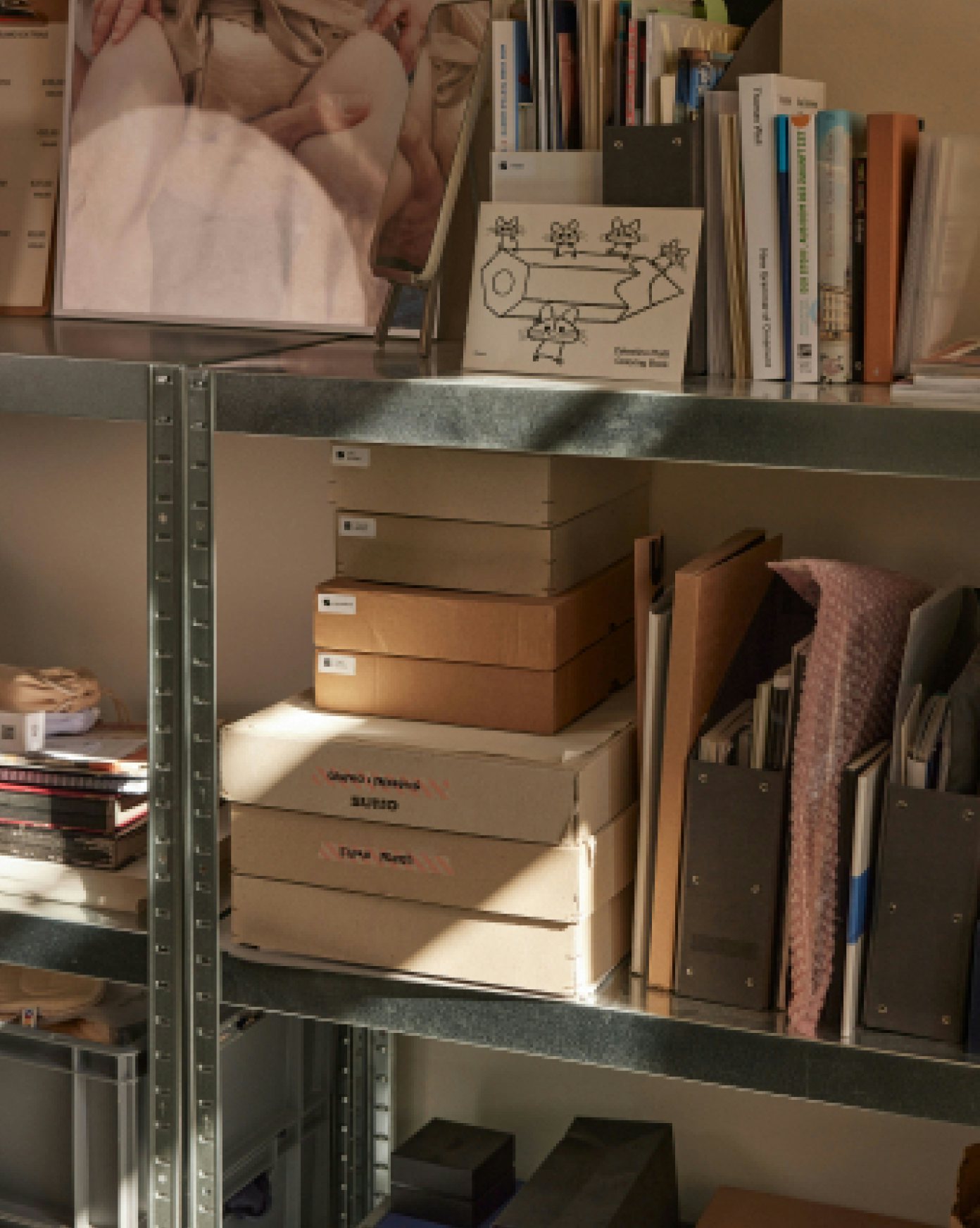
How do you get this new generation to find you, like you and change their behavior?
Once people see enough positive reviews they will become more aware. That’s what we need most now, positive reviews for our product.
I believe people will buy our products, because it works, they like the way it looks and how the material feels. Yes, the product is more sustainable, but I think parents will actually buy the product because it feels better than Pampers. Through our visual language we decided to bring fun and desirability into cloth diapering. We’re not dogmatic and make it easy to start making a more sustainable choice. I know most parents still carry a couple of disposables in their bag just for safety, and this is fine. Honestly, you don’t have to become completely sustainable. By swapping a part of your disposable diaper use, you can already make an insane difference.
How do you see the future of Sumo, what is your next step, and what will it take to get there?
Well, I loved building this company and I still do. Thankfully, I partnered with Caspar very early on. Without him I could never have done it. He was in the lead of the business side and I could focus on the creative part and building the supply chain. I am so proud of how we have arranged our production in Portugal now.
I love creating the product, but I am not so passionate about selling it. With someone else focusing on marketing now, I have a bit more time on my hands to give attention to something new. The reusable hygiene space is growing like crazy and there is a lot happening in femcare. We have a lot of other companies now consulting us on how to build a sustainable supply chain or that want to license our fabrics. I would like to explore this more.
Finally, what is the most important message you want to get across?
I think what stops most consumers to make sustainable choices, is this thought that they have to do all or nothing. I realized that I have a role in taking that fear away. So yes, using a reusable diaper only occasionally is just fine. Many small changes in everyday life together help create massive impact.
Instagram: @sumobaby
More interviews
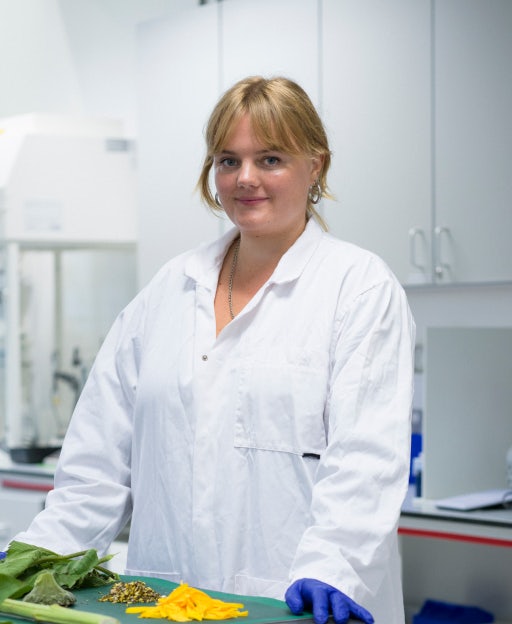
Secrid Talent Podium - ClimaFibre
Sunflowers can help to reduce our dependence and the environmental damage of cotton in the fashion industry.
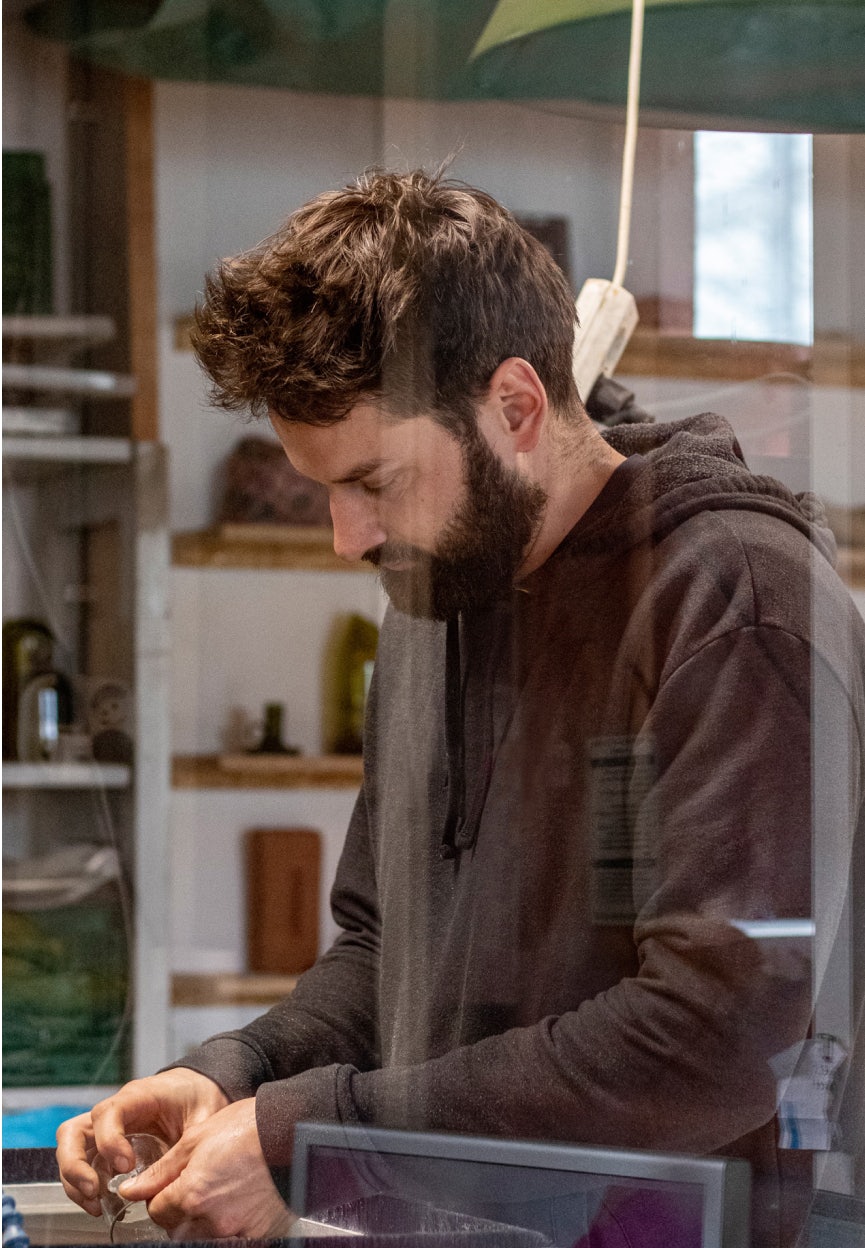
Secrid Talent Podium - Super Local
Luc van Hoeckel designs solutions for the 90% of the world's population without access to decent basic facilities.
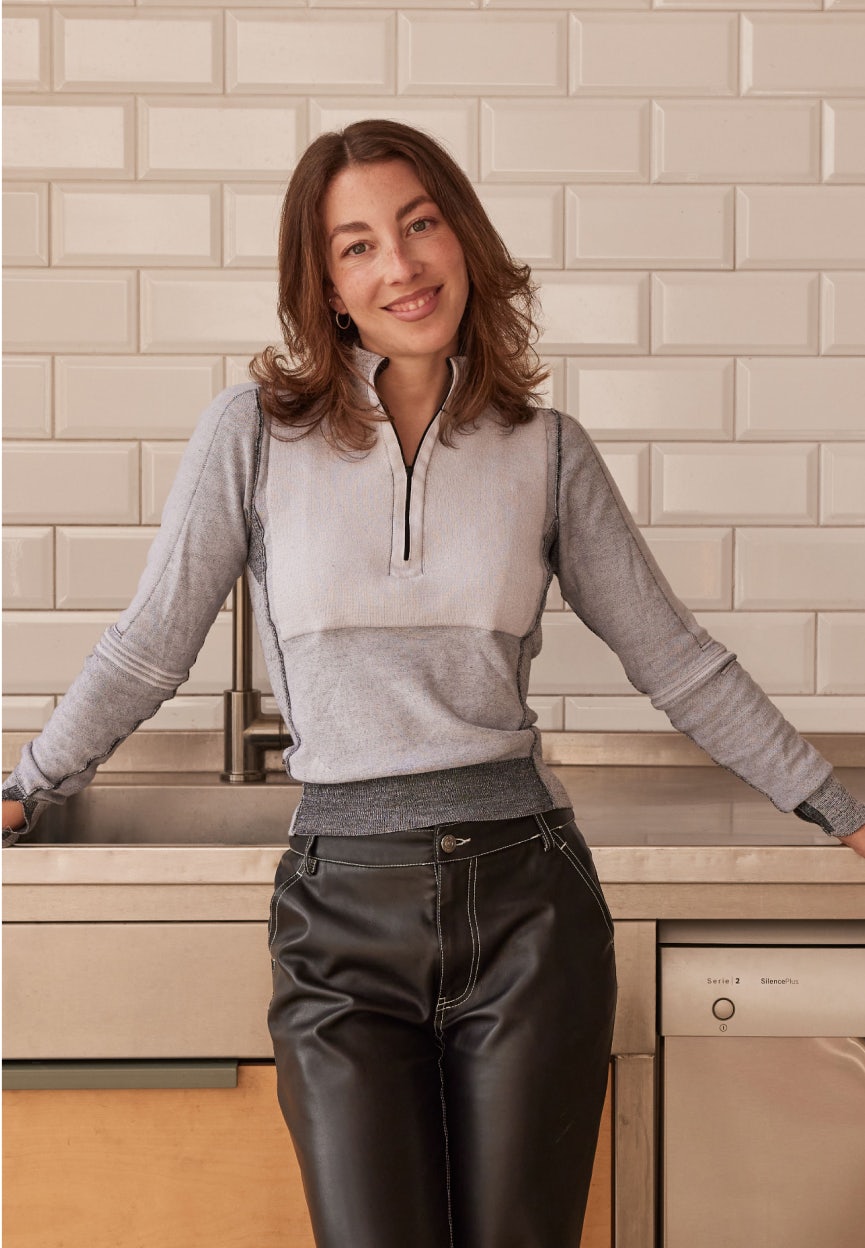
Secrid Talent Podium - Vorkoster
To combat food waste, Kimia Amir-Moazmi is working on a product that allows consumers to see for themselves whether food is still safe to eat.
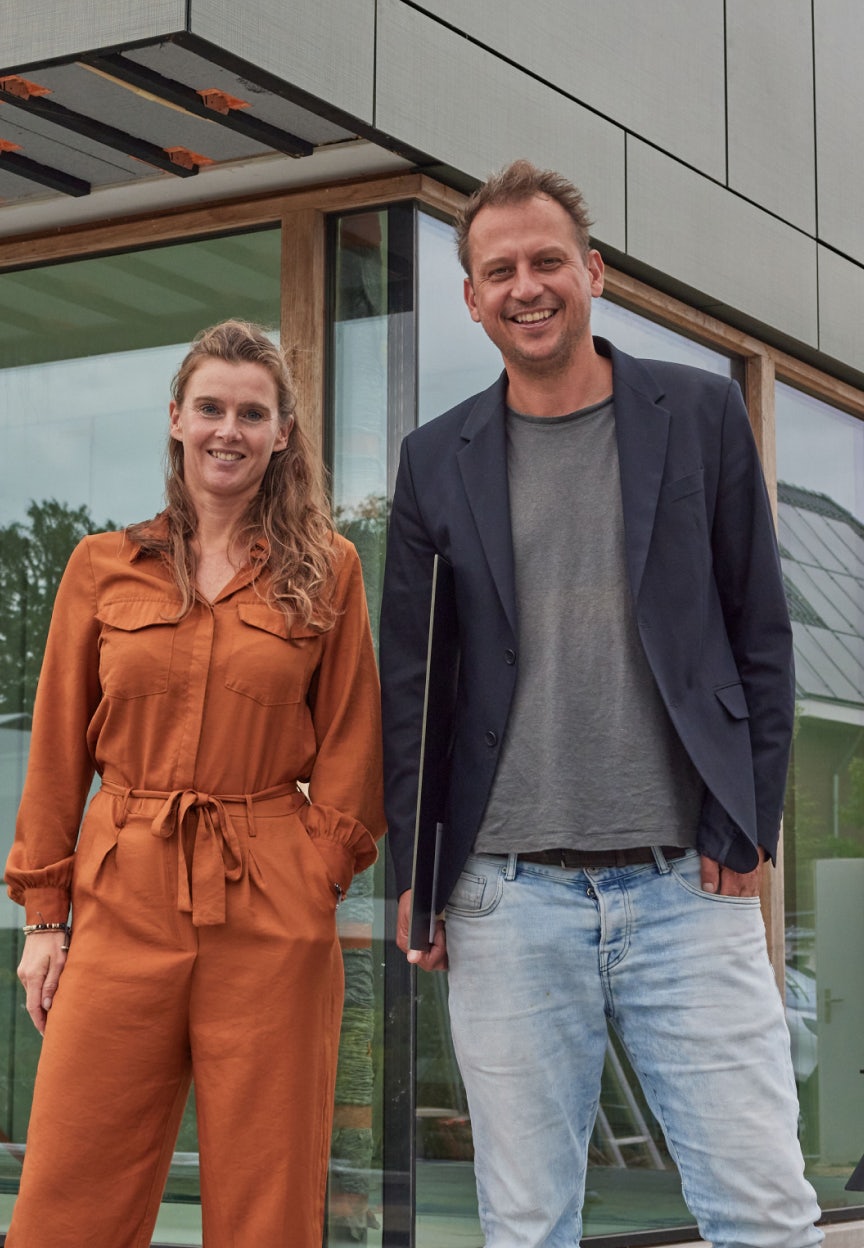
Secrid Talent Podium - Solarix
Solarix designs and produces aesthetic solar panels as façade cladding.
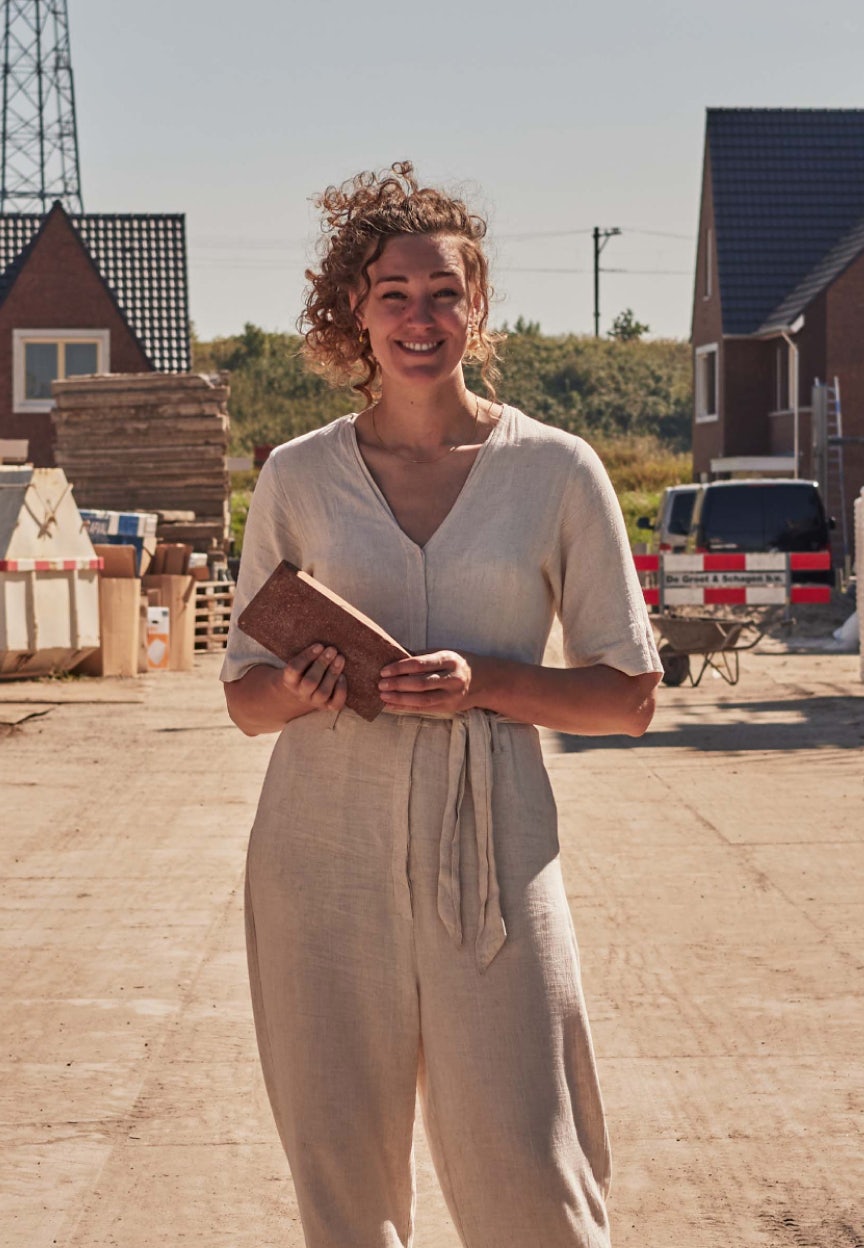
Secrid Talent Podium - Claybens
Emy Bensdorp is developing a technique to transform clay soil contaminated by PFAS into 100% clean bricks.
